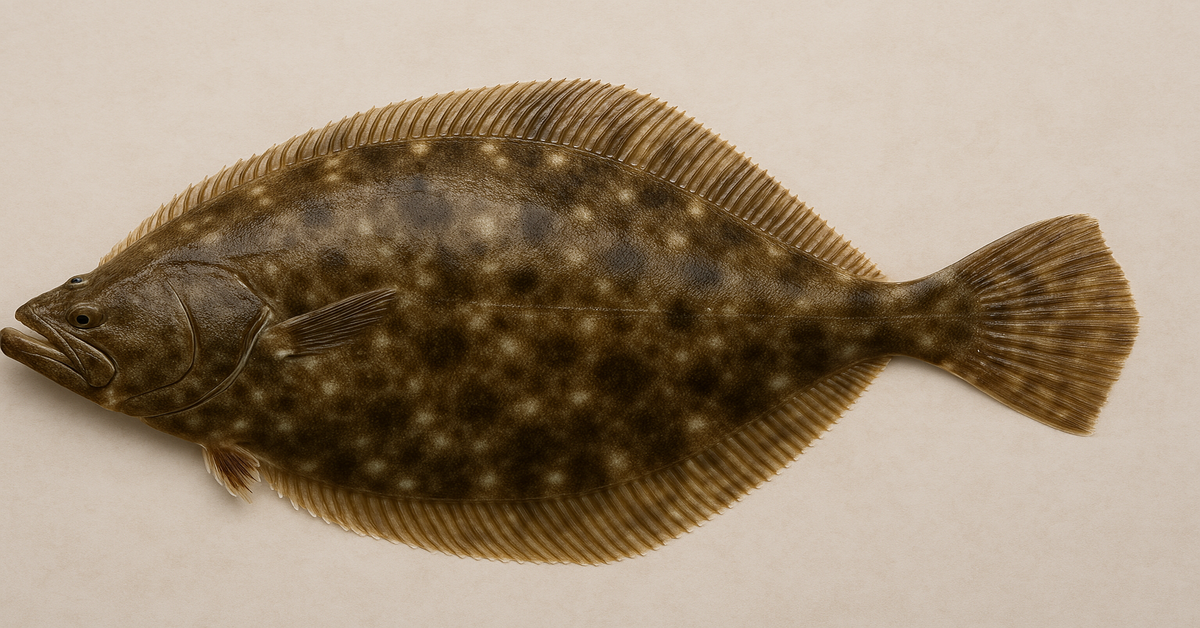Fluke fish, more commonly known as summer flounder, are a beloved species among recreational and commercial fishers alike. Known for their distinctive flat body, unique camouflage abilities, and delicious taste, fluke play an important ecological and economic role in the Atlantic marine environment.
In this comprehensive guide, we’ll explore everything you need to know about fluke fish—from their biology and habitat to fishing techniques, culinary uses, and conservation. Whether you’re a seasoned angler, seafood lover, or marine biology enthusiast, this guide has something for you.
Understanding Fluke Fish: Species Overview
What Is a Fluke Fish?
The fluke fish, scientifically known as Paralichthys dentatus, is a species of flatfish native to the western Atlantic Ocean. Unlike many other fish, fluke have both eyes on one side of their head, allowing them to lie flat on the seafloor while keeping a lookout for predators and prey.
They belong to the left-eyed flounder family and are one of the most commercially valuable flatfish in the United States.
Distinctive Characteristics
- Flat, asymmetrical body
- Left-eyed orientation (both eyes on the left side of the head)
- Large mouth with sharp teeth
- Coloration that changes with the environment
- Females are significantly larger than males
Habitat and Distribution
Where Fluke Fish Live
Fluke are typically found in coastal waters along the eastern United States, ranging from the Gulf of Maine to Florida, with the greatest concentrations from Cape Cod to North Carolina.
Seasonal Migration Patterns
Fluke migrate with the seasons:
- Spring/Summer: Move inshore to bays, estuaries, and sandy bottoms to feed and spawn.
- Fall/Winter: Migrate offshore to deeper waters for overwintering.
This seasonal movement makes them a prime target for both recreational and commercial fishing industries during the warmer months.
Life Cycle and Reproduction
Fluke Growth and Development
Fluke begin life as free-swimming larvae with an eye on each side of their head. As they grow, one eye migrates to the left side—a transformation typical of flatfish.
Spawning Behavior
- Spawning season: Typically from May to September.
- Spawning locations: Offshore continental shelf waters.
- Reproductive strategy: Broadcast spawning—eggs are released and fertilized externally in the water.
Lifespan and Size
Fluke can live up to 12 years, although most harvested fluke are younger. Females grow larger than males and can reach up to 30 inches and weigh over 10 pounds.
Diet and Predation
What Fluke Eat
Fluke are opportunistic predators and ambush feeders. They bury themselves in the sand and strike quickly at prey.
Common diet includes:
- Small fish (e.g., sand lance, menhaden)
- Squid
- Shrimp
- Crabs
- Worms
Natural Predators
Fluke face predation from:
- Larger fish (e.g., striped bass, sharks)
- Marine mammals
- Humans (through fishing)
Their camouflage ability and agility help them avoid many threats.
Fishing for Fluke
Recreational Fishing
Fluke are a favorite target for recreational anglers due to their fight, abundance, and flavor.
Best times to fish: Late spring through early fall, during their inshore migration.
Popular locations: New Jersey, Long Island Sound, Cape Cod, Chesapeake Bay.
Techniques and Gear
Common fishing methods:
- Drift fishing: Using the tide and wind to move the bait across the bottom.
- Bucktail jigging: Effective and popular method using artificial lures.
- Bottom rigs: Baited hooks with sinkers to keep the line near the seafloor.
Best baits:
- Spearing
- Squid strips
- Mummichogs
- Gulp! synthetic baits
Tips for Success
- Fish during tidal movements (incoming or outgoing tides).
- Target sandy bottoms near drop-offs, channels, or structure.
- Use light tackle for better sensitivity and feel.
- Match lure size with the water clarity and baitfish present.
Commercial Importance
Economic Value
Fluke are one of the most valuable commercial finfish species on the U.S. East Coast. Their market value stems from both their abundance and high consumer demand.
Harvesting methods:
- Otter trawling
- Gillnets
- Hook and line
Major landing states:
- New York
- New Jersey
- North Carolina
- Massachusetts
Fisheries Management
Due to their popularity and historical overfishing concerns, fluke are subject to tight regulation.
Management authorities include:
- NOAA Fisheries
- Mid-Atlantic Fishery Management Council
- Atlantic States Marine Fisheries Commission
Key conservation measures:
- Catch limits
- Size and bag limits
- Seasonal closures
Culinary Profile
Taste and Texture
Fluke is prized for its mild, sweet flavor and delicate, flaky white flesh. It is extremely versatile and works well with a variety of cooking methods.
Popular Recipes
- Fluke ceviche: Raw fluke marinated in citrus juice and herbs.
- Pan-seared fluke: Cooked with butter, lemon, and capers.
- Baked fluke fillets: With breadcrumbs, garlic, and parmesan.
- Grilled fluke tacos: Served with cabbage slaw and chipotle mayo.
- Stuffed fluke: Filled with crabmeat or seafood stuffing.
Nutritional Benefits
Fluke is a healthy source of protein and low in saturated fat. It also contains essential nutrients such as:
- Omega-3 fatty acids
- Vitamin B12
- Selenium
- Phosphorus
Conservation and Sustainability
Historical Challenges
In the 1980s and 1990s, overfishing led to significant declines in fluke populations. A rebuilding plan was initiated in the early 2000s to restore stock levels.
Current Stock Status
Thanks to aggressive management strategies, fluke populations have shown signs of recovery. However, debates continue over quota allocations between commercial and recreational sectors.
How You Can Help
- Follow local fishing regulations and size limits.
- Report tagged fish to contribute to research.
- Support sustainable seafood practices.
- Choose fluke from certified fisheries.
Fluke vs. Other Flatfish
Comparison with Flounder
Although “fluke” and “flounder” are often used interchangeably, not all flounder are fluke.
- Fluke: Left-eyed, large mouth, aggressive.
- Winter flounder: Right-eyed, smaller mouth, found in colder waters.
Comparison with Halibut
- Halibut: Much larger (up to 8 feet), found in the Pacific and North Atlantic.
- Fluke: Smaller, more accessible, and found closer to shore.
How to Identify
- Eye orientation (left side for fluke)
- Large, toothy mouth
- Patterned, camouflaged skin
- Dorsal fin that extends from near the eyes to the tail
Interesting Facts About Fluke Fish
- Fluke can change their skin color to match the ocean floor.
- They can consume prey almost half their size thanks to their large mouths.
- The largest fluke ever recorded weighed over 20 pounds.
- Juvenile fluke undergo a dramatic transformation as one eye migrates to the other side of the head.
- They’re sometimes called “doormats” due to their flat, wide shape when they grow large.
Conclusion
The fluke fish, or summer flounder, is a remarkable species that offers excitement to anglers, sustenance to seafood lovers, and ecological balance to the Atlantic marine environment. Understanding its habits, behavior, and the regulations that protect it allows us to enjoy this valuable resource sustainably.
Whether you’re targeting them on a weekend fishing trip or savoring their mild, flaky flavor in a gourmet dish, fluke fish are a true treasure of the sea. With thoughtful management and responsible fishing practices, we can ensure that future generations continue to enjoy everything this fascinating flatfish has to offer.
FAQs
1. Is fluke the same as flounder?
Fluke is a type of flounder, specifically the summer flounder. While all fluke are flounders, not all flounders are fluke. The primary distinction lies in eye orientation and habitat.
2. What’s the best bait for catching fluke?
Popular baits include squid, spearing, and synthetic soft plastics like Gulp! Fluke are ambush predators, so anything that mimics small fish or shrimp can be effective.
3. When is the best time to catch fluke?
Fluke fishing is best from late spring through early fall, during their inshore migration. Peak months vary by region but are typically June to August.
4. Can you eat fluke fish raw?
Yes, fluke is often used in sashimi, ceviche, and crudo. Ensure it’s extremely fresh and preferably sushi-grade if consuming raw.
5. How do I know if a fluke is legal to keep?
Legal size and bag limits vary by state and season. Check with your local fishery management agency for up-to-date regulations before fishing.
6. Are fluke fish sustainable to eat?
Yes, when sourced from managed fisheries following quota and size regulations. Look for fluke certified by sustainable seafood programs for the best choice.











